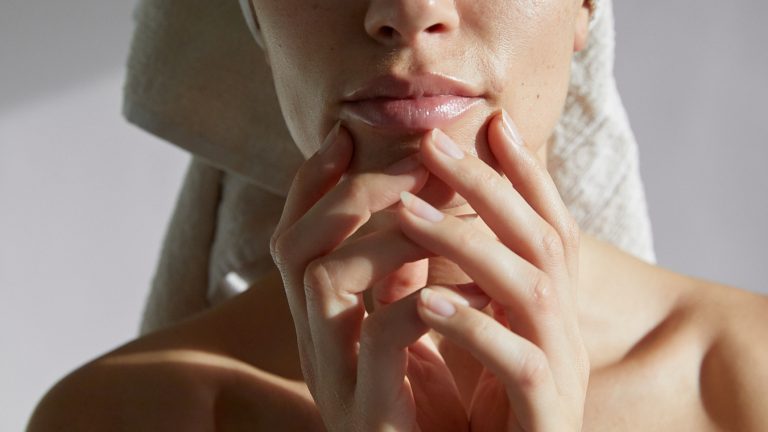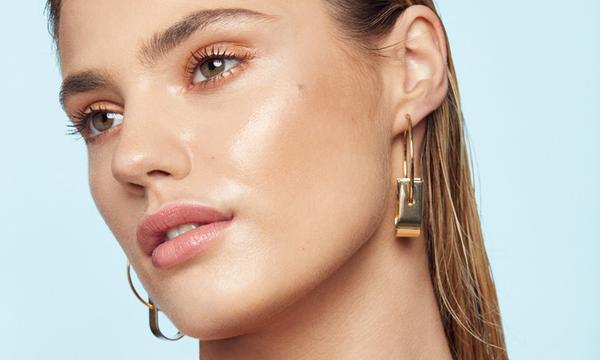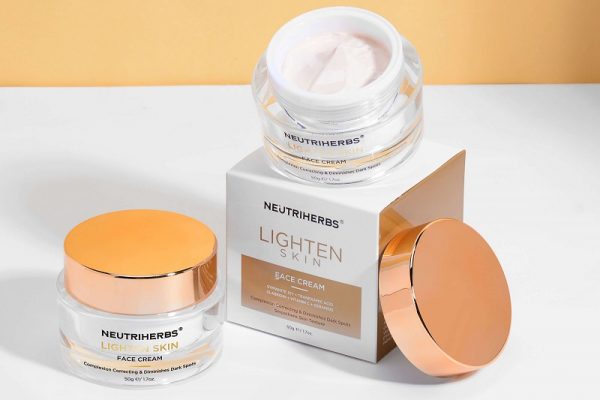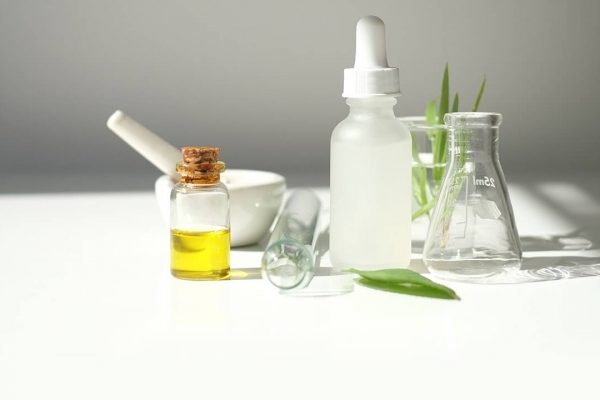Black dots on your nose, forehead or chin? Contrary to what is often assumed, these are not always blackheads (comedones) but sometimes so-called sebaceous filaments, also known as follicle filaments. But what is it exactly? And what can you do about it?
What are Sebaceous Filaments?
Sebaceous filaments are deposits of sebum and horn or skin cells. These settle in the pores and become noticeable as small dark dots on the face. These dots appear in groups and tend to gather in the so-called T-zone. This includes the nose, forehead and chin. This is because most of the sebaceous glands are located in these places, and a corresponding amount of sebum is produced.
Follicle filaments ensure that the sebum reaches the skin’s surface from the pores and thus protect the skin from drying out. Consequently, they are part of the natural skin structure and are helpful. They help keep the skin elastic and supple.
The dark areas cannot be completely removed. Instead, trying to squeeze the filaments or remove them with the help of nose strips against blackheads will harm your skin because these strips remove the sebum and the top layer. This can cause redness and inflammation. Worse still, sebum production increases. You achieve precisely the opposite with the strips.
Since follicle filaments are also an integral part of the skin cycle, the dark spots will return anyway. Incidentally, nose strips are entirely unsuitable for Sensitive skin.
How noticeable are the black dots?
How visible Sebaceous Filaments are on your face depends on your pores. While the filaments are only visible in one case if you look closely or in a magnifying mirror, they are more noticeable with enlarged pores. Only if the skin produces excess sebum, for example, due to hormonal fluctuations, can the follicle filaments harden and turn dark if they come into contact with oxygen.
What are blackheads?
Blackheads are significant and black and appear singly or anywhere on the face. They are made up of sebum and dead skin cells. In addition, there is a cornification disorder of the skin. The hair follicle, through which the sebum typically reaches the skin’s surface, hardens. The sebum cannot escape. This clogs the duct under the skin and creates a hard core that turns black when oxygen is supplied. Clogged pores prevent the natural sebum that the skin produces from escaping. If blackheads remain under the skin, the pore widens, and the skin at the pore exits tears. This allows air to reach the accumulated sebum, and the pigment melanin it contains turns black so that the classic blackhead becomes visible.
Since blackheads are always on open pores, you can treat them with specific measures. In principle, daily, gentle skin care is sufficient. Regular exfoliation, which gently removes the deposits in your pores, also helps. Active ingredients such as salicylic, fruit or lactic acid, which are effective against pimples and impure skin, are optimal. In more stubborn cases, a professional facial cleansing is recommended. Blackheads that are under the closed skin can become inflamed. They become purulent, swell and sometimes really go away.
In this case, squeezing out blackheads requires sensitivity because the closed skin can tear anywhere – even inside. It is best to have blackheads removed by a beautician. But if you want to lend a hand yourself, it is best to use a comedone lifter. With the help of a comedone lifter, you can remove blackheads quickly and safely, and it is effortless and hygienic Skincare practise. Because squeezing blackheads with your fingers can lead to inflammation and ugly scars if you don’t do it professionally.
Therefore, the beautician you trust or the dermatologist is the best place to go. While inflamed blackheads cause pimples and skin problems, sebaceous filaments are harmless and only disturb the skin’s appearance.




